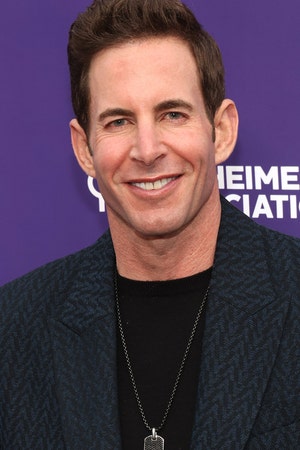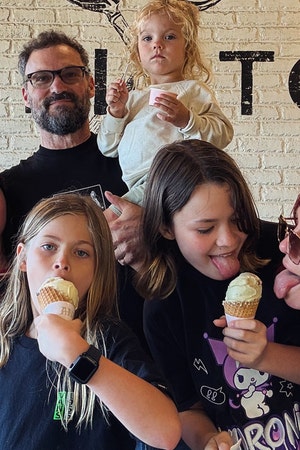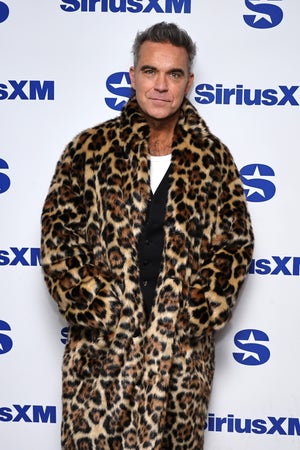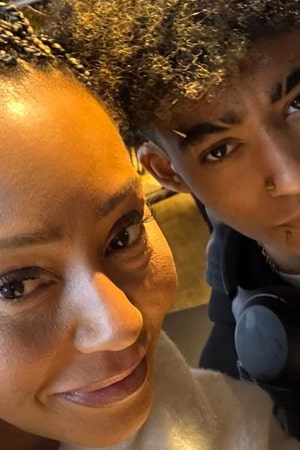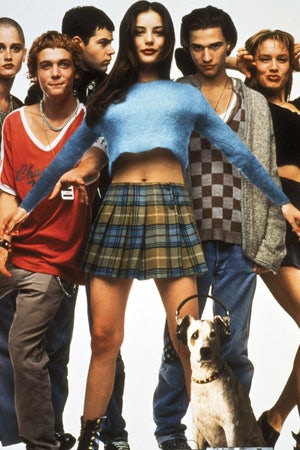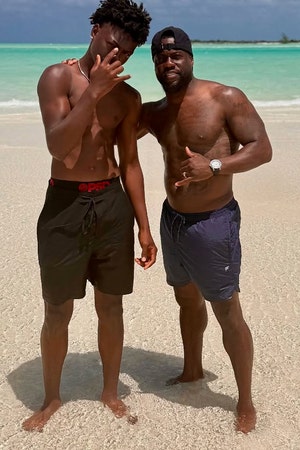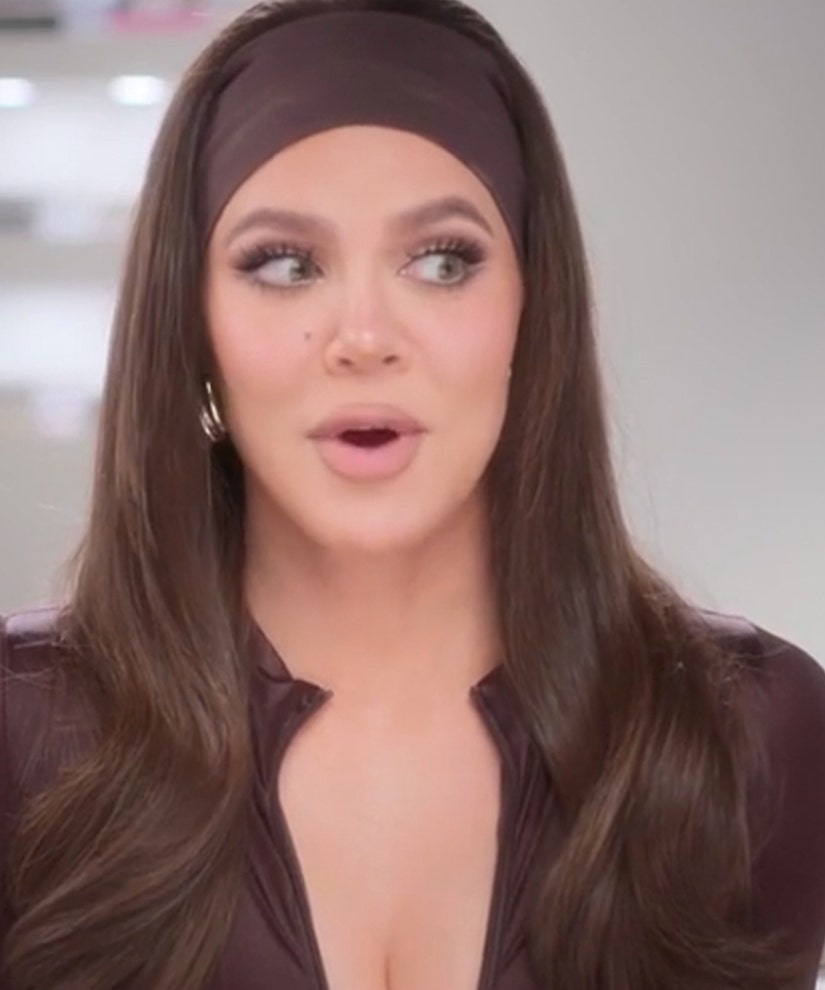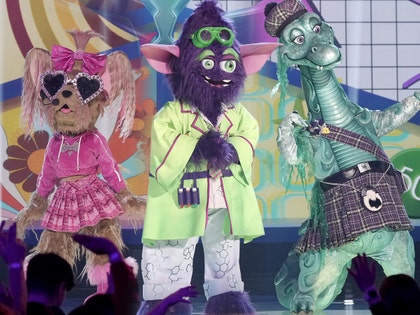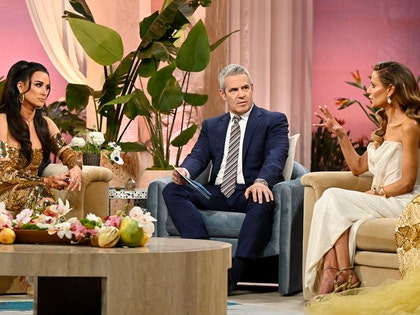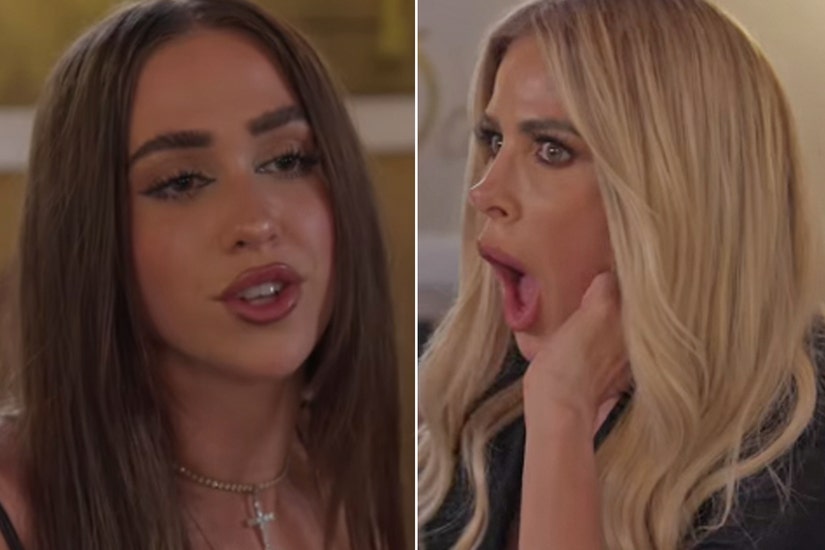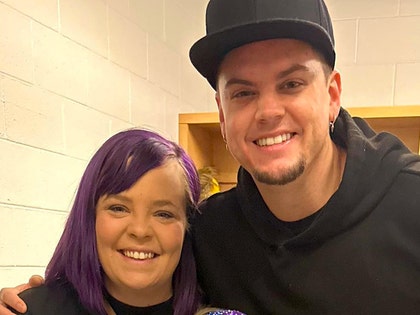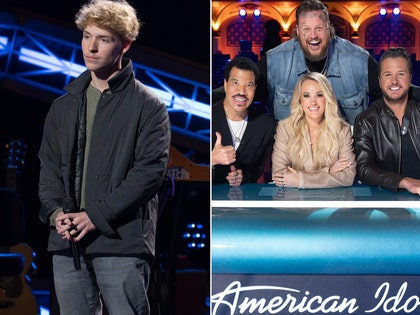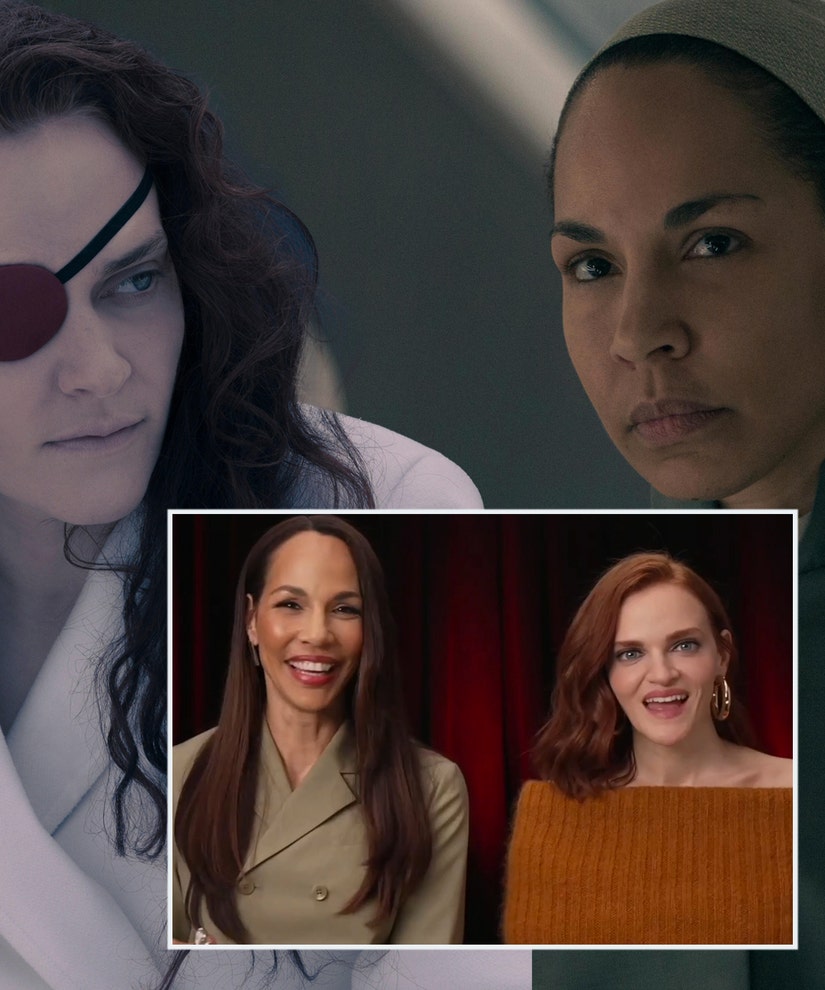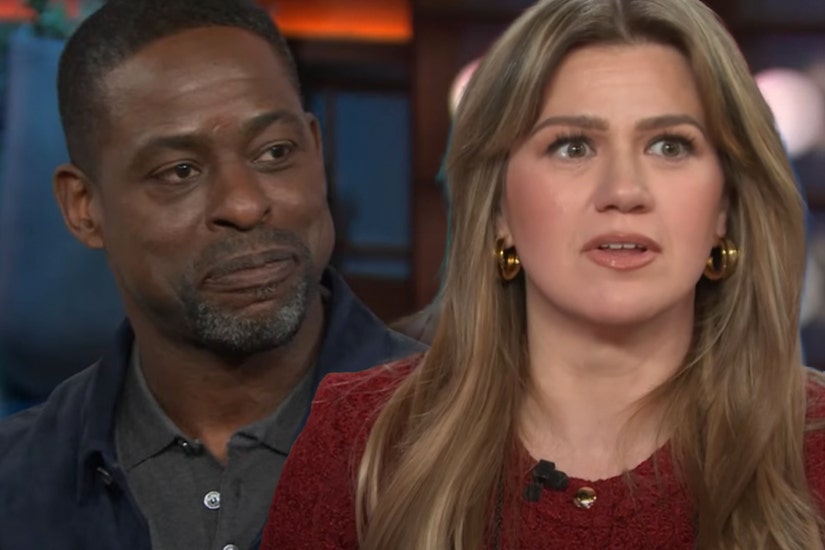 FX
FX
Ryan Murphy's anthology spinoff dips into "Black Mirror" territory with a piece on the possibilities of subliminal messaging and psychological manipulation through film -- with a wickedly nasty twist at the end!
After garnering all kinds of media attention for its premiere featuring Paris Jackson, "American Horror Stories" moved into its post-hype era by exploring the nature of horror itself.
But before we get into that, we have to acknowledge what may prove our favorite part of this new series. One of the highlights of any new season of "American Horror Story" has to be its title sequence.
 Getty/FX
Getty/FX
Paris Jackson Says She Was 'Horrified' By Her 'Evil' American Horror Stories Character
View StoryFrom the creepy music with its combination of familiar refrains across all season and unique elements suited to each new theme to the scattershot imagery, "AHS" has some of the best intro sequences in the business. Now, we're getting a new one each week?!
This week's "Drive-In" installment brought to life a dilapidated drive-in, reviving it in much the same way COVID-19 revived the flagging industry. But it did so with a horrific twist that was an absolute delight to watch. Is it weird we usually like these intros better than the episodes themselves?
"AHS" has always been inspired by the horror film genre, and "Drive-In" takes that inspiration more literally than any chapter before it, centering on an experimental film that looks to push the very idea of horror in cinema to its only possible conclusion.
"A horror movie where the horror isn't on-screen, it's in the audience," explains John Carrol Lynch's film director, Larry Bitterman.
At the same time that its deconstructing the idea of why we like horror films, this episode is taking a page from "Black Mirror" by turning that lens not just on why we like to be scared, but also how the media can be used to manipulate us.
In 1986, director Larry Bitterman (John Carroll Lynch) unleashed his film, "Rabbit Rabbit," on an unsuspecting world. It resulted in six deaths and a hearing before Mrs. Tipper Gore (Amy Grabow), who was famously on a crusade at the time against anything potentially harmful to our children.
Those scenes played out after our "hero" Chad started digging into the movie after it was announced it would be playing at the local drive-in as a special one-night revival event. Even in the clip, Mrs. Gore said that all copies of the film were destroyed.
 FX
FX
Fans Obsess Over Paris Jackon's Surprise Turn in American Horror Stories Anthology Premiere
View StoryFans of "AHS" know what they're signing up for, so there's no point in getting frustrated at horror movie tropes. That's kind of what this is all about, sending up those tropes and tweaking them so they're seen through a different lens.
So it was fun being introduced to Chad's girlfriend and their horny high school friends, knowing full well that probably most of them would die ... and in gruesome ways. They had to for the message to get through.
Of course there was a protester outside of the drive-in who'd survived the original '86 massacre, after her boyfriend ripped her eye out with her teeth. And of course Adrienne Barbeau got to ham it up as the drive-in owner. She's Adrienne Barbeau!
Most horror films aren't going for highbrow art, and they aren't respected as such. That was one of Larry's complains, and what inspired him to make "Rabbit Rabbit." He was inspired by "The Exorcist," which he said had two subliminal frames inserted that left some people convinced they were possessed.
When that film lost the Oscar for Best Picture because genre films still get virtually no respect at the Oscars -- or really genre in any form of entertainment -- he decided to create something wholly new, leaning into the subliminal messaging concept.
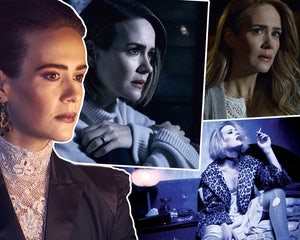 FX
FX
Sarah Paulson Doesn't Care for This American Horror Story Season at All, Felt 'Trapped' to Do It
View StoryIt's happened in advertising over the years, and here we're being shown just how easy it could be to rewire the human brain through sights and sounds. Perhaps this is the cautionary part of this tale. The intent may not be to drive people to "28 Days Later" insanity, but that doesn't mean these tools couldn't be used to alter people.
In the original screening, six people died. But the carnage unleashed at the drive-in was far more gruesome (think oral sex bite) with every single person in attendance who was watching the film driven to insantiy.
The only thing that saved Chad and his girlfriend Kelley was that they were getting hot and heavy in the car, barely paying attention to the movie. But they also apparently paid just enough attention to be willing to do some pretty horrific things themselves.
What followed was a fairly straightforward run through the drive-in with the patrons giving chase like "fast zombies," followed by the inevitable early morning follow-up where they decided they needed to save the world from this film by stopping a rumored second screening.
Yes, it was easy that they were able to track down the delivery van back to Bitterman's trailer, but this actually proved a fun scene, with Lynch having an absolute ball as a deranged director who genuinely believes the carnage he created is beautiful.
 Getty
Getty
Riley Keough Says She Became a 'Death Doula' In Wake of Brother Benjamin's Suicide
View StoryUltimately, he failed to impress on the teens that all of this was great, so they shot him, dragged the original film's location from him and set it on fire, along with his trailer, leaving him to die. Clearly, the film had some impact on them, loosing all those things that keep us from callously murdering people (even after what he'd done).
We even got the slo-mo walking away from the trailer fire as Bitterman shouted from inside. As we said, "AHS" trades in tropes, and fans know this and expect it. It's an homage to horror, but sometimes it still manages to have something new to say.
In this case, what Bitterman had to say was that the kids forgot to ask how he suddenly had a Rolls-Royce. And that answer was the episode's cruel twist at the end.
As the kids finally got their chance to get it on, we panned away from that action to see the genesis of a whole new horror. The Rolls came from a distribution deal with Netflix. Suddenly, "Rabbit Rabbit" is available right in your own home, as is the madness it creates.
If we're sticking with our "Black Mirror" analogy, this is a reminder that our technology is with us always now, it's in our homes, and it's being controlled by outside forces who don't have our best interests at heart. Targeted advertising may be just the first step. These devices are listening to us, they're learning about us, how far before they're rewiring us with subliminal messaging ... or worse!
"American Horror Stories" drops new episodes every Thursday, streaming to FX on Hulu.


